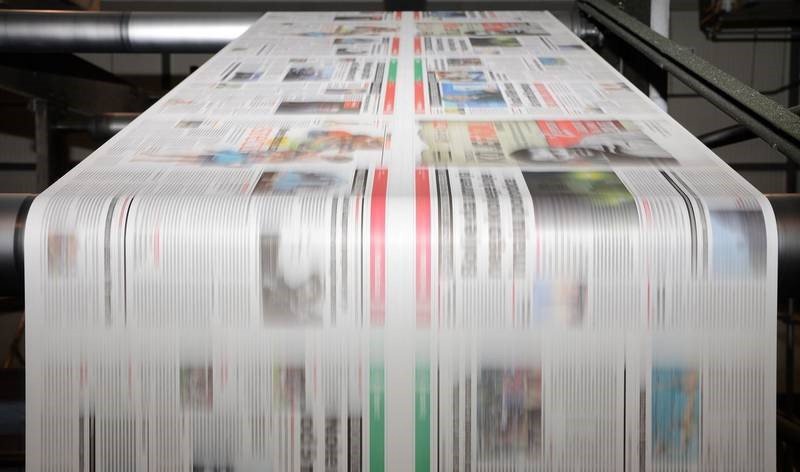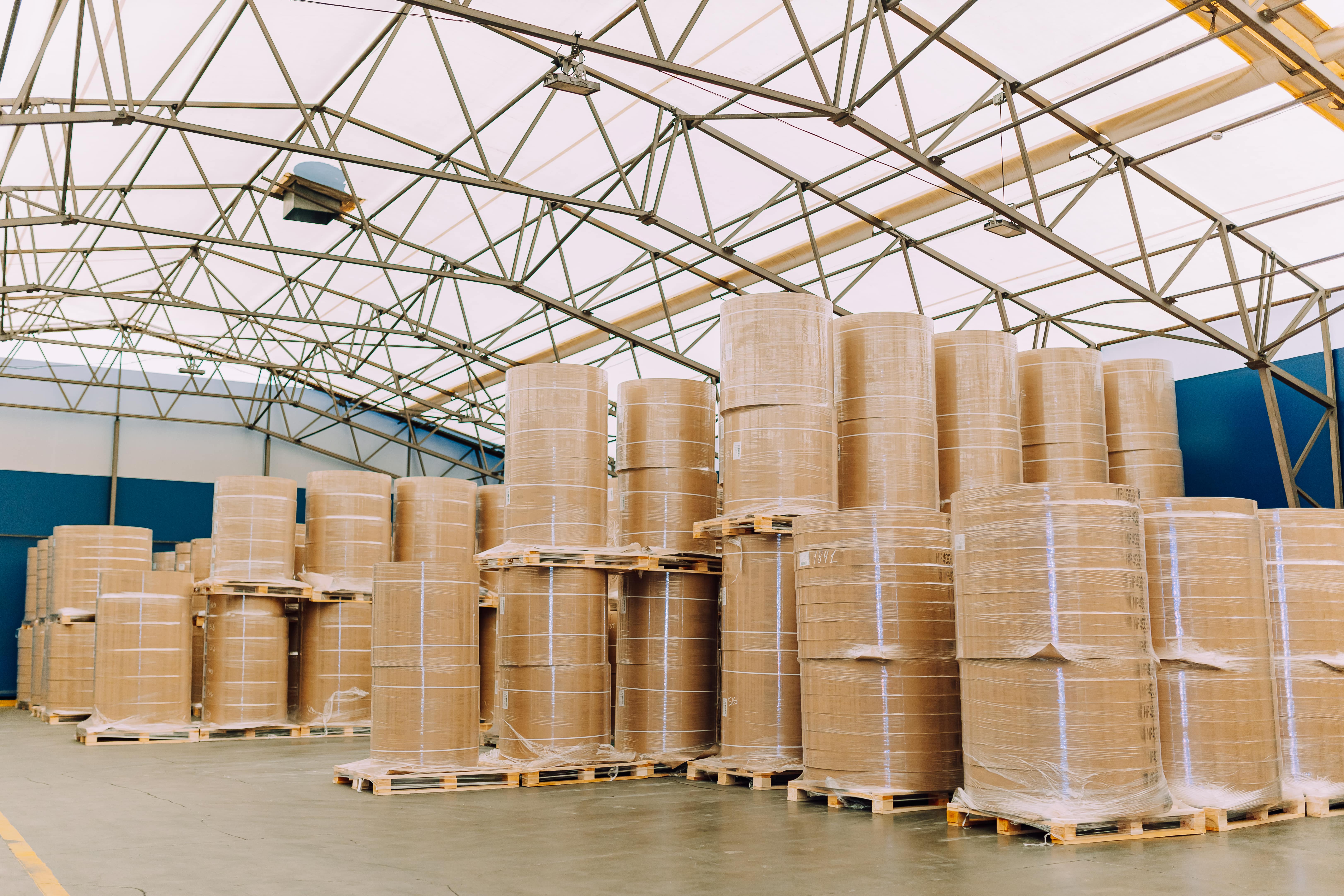1919
7 December 2023
Paper industry is one of the largest users of Adhesives and chemicals. Overall world production of paper and paperboard is more than 100 million tons. The generic term “paper” includes a very wide range of products with very different coatings. Many of these products are produced with the help of adhesives and chemicals. Different products has led to increase in number of adhesives, each optimized for a specific purpose.
In line to home or office applications where relatively few adhesives are used, a higher quantity of adhesives are used in industry and a lot of these are tailor-made for special requirements or processing.
An adhesive can be defines as a material used for holding two surfaces together. An adhesive must wet the surfaces, adhere to the surfaces, develop strength after it has been applied, and remain stable. In a single statement it is a material used for bonding that exhibits flow at the time of application.
Whereas a Chemical is defined as an element, which has a specific molecular composition and may be produced by or used during a natural chemical process.
Adhesives are available in various types:
Natural
- Starch and dextrin - These materials are derived from cereals or roots etc. The basic constituent is polysaccharide which on hydrolysis yields long chain glucose units. Different versions can occur with the use of different food materials and with changes in hydrolysis methods. The main use for these adhesives is the paper industry where they are used in multiwall bags, corrugated paper etc. Dextrin which is dry roasted starch is used in remoistenable adhesives.
- Gelatine (animal, fish, vegetable glues) – These are proteins which are derived from the hydrolysis of either collagen or soya flour, or by separating casein from skim milk. Animal glues from bones and hides are used in gummed tape, textiles and the paper industry such as book-binding and case making. Caseirs from skim milk are used mainly in wood to wood bonds. Soya bean glues are used in paper backs.
- Asphalt and Bitumin - These high fractions of crude oil are more used as sealers rather than adhesives except in the bonding of coarse grade papers to produce waterproof building papers.
Semi-synthetic
Cellulosic - Cellulose is in the structural elements of plants and is a polymer made up of glucosidic rings joined by oxygen. Ethers and esters can be formed to give either water soluble or solvent soluble polymers. Available in forms like, Cellulose nitrate - mainly as a clear general purpose home handyman adhesive. Cellulose acetate butyrate - paper to paper and plastic adhesives. Methyl cellulose - leather paste to prevent shrinkage as drying and wallpaper pastes. Ethyl cellulose - low temperature adhesives.
Synthetic
- Vinyls – Its a range of vinyl products which is used worldwide in paper industry. The number of vinyl derivatives is very large and all have some specific properties. Some members are produced either as an emulsion or as a solvent soluble type. Polyvinyl acetate - paper converting, wood. Polyvinyl alcohol - paper applications.
- Acrylics – As same as vinyls but with few different compositions are used in pressure sensitive adhesives, and for flooring, paper lamination, textiles, flocking adhesives etc.
Apart from Adhesives there are various chemicals used in manufacturing paper
- Optical brightening agent - Optical brightener is used to make paper appear more white.
Pigment - Pigments that absorb in the yellow and red part of the visible spectrum can be added. As the dye absorbs light, the brightness of the paper will decrease. To increase whiteness, a combination of pigments and optical brightening agent are often used. The most commonly used pigments are blue and violet dyes.
- Retention agent – It is added to bind fillers to the paper. This retention agent is a polymer with high cationic, positively charged groups. An additional feature of retention means to accelerate the dewatering in the wire section of the paper. Polyethyleneimine and polyacrylamide are some of the chemicals used.
- Caustic soda - Caustic soda is added to increase the pH in the pulping process of fibers. The higher pH of the paper fiber solution causes the fibers to smoothen and swell, which helps in the grinding process of the fibers.
- Sizing agent - Internal sizing of paper, most paper types must have some water-resistance in order to have a specific writing quality and / or printability. Today mainly AKD (alkyl ketene dimer) and ASA (alkenyl succinic anhydride) are used.
- Wet strength additive - These additives ensure that when the paper becomes wet, it retains its strength. This is especially important in a tissue paper. Typical chemicals used are as epichlorohydrin, melamine, urea formaldehyde and polyimines. These substances polymerize in the paper and result in construction of a strengthening bond.
- Dry strength additives – Also known as dry strengthening agents are chemicals that improve paper strength of normal or not wet condition. Those strength including compression strength, bursting strength, tensile breaking strength, delamination resistance etc. Typical chemicals used are as cationic starch and polyacrylamide (PAM) delivertives. These Dry strength additives act as binder of fibers, often under aid of aluminum ion in paper sheet.
- Cationic starch – It is used to enhance the paper strength, cationic starch is added to wet pulp in the manufacturing process. Quaternary salts that are used include 2.3-epoxy propyl trimethyl ammoniumchloride (EPTAC, also known as or Glytac Quab) and (3-chloro-2-hydroxypropyl) trimethyl ammonium chloride (CHPTAC, also known as Quat 188).
Mineral Fillers - Usually found as China Clay, Calcium carbonate
- Coating binders – Available as Styrene butadiene latex, Styrene acrylic, dextrin, oxidized starch.
- Pulping chemicals – Are used for the production of chemical pulp from wood chips, following chemicals can be used: Caustic soda, Sodium sulfide for the Kraft process,
- Sulfurous acid for the Sulfite process, Caustic soda, Anthraquinone for the Soda pulping.
- Bleaching chemicals - Sodium dithionite, Chlorine dioxide, Hydrogen peroxide, Ozone
Today the production of paper, cardboard and cartons without usage of waste paper is unimaginable. Usage of adhesives and chemicals is a vital part in manufacturing any kind of paper. When compared, adhesives with other substances brought into the paper system during paper production (e.g., coating binders) and paper processing (e.g., ink binders) and that have properties similar to adhesives, one can see that adhesives play a little role with respect to quantity.
We can negate the fact that how important may be, adhesives and chemical are harmful, careful usage of it can create better effect on manufacturing paper and its products.
In line to home or office applications where relatively few adhesives are used, a higher quantity of adhesives are used in industry and a lot of these are tailor-made for special requirements or processing.
An adhesive can be defines as a material used for holding two surfaces together. An adhesive must wet the surfaces, adhere to the surfaces, develop strength after it has been applied, and remain stable. In a single statement it is a material used for bonding that exhibits flow at the time of application.
Whereas a Chemical is defined as an element, which has a specific molecular composition and may be produced by or used during a natural chemical process.
Adhesives are available in various types:
Natural
- Starch and dextrin - These materials are derived from cereals or roots etc. The basic constituent is polysaccharide which on hydrolysis yields long chain glucose units. Different versions can occur with the use of different food materials and with changes in hydrolysis methods. The main use for these adhesives is the paper industry where they are used in multiwall bags, corrugated paper etc. Dextrin which is dry roasted starch is used in remoistenable adhesives.
- Gelatine (animal, fish, vegetable glues) – These are proteins which are derived from the hydrolysis of either collagen or soya flour, or by separating casein from skim milk. Animal glues from bones and hides are used in gummed tape, textiles and the paper industry such as book-binding and case making. Caseirs from skim milk are used mainly in wood to wood bonds. Soya bean glues are used in paper backs.
- Asphalt and Bitumin - These high fractions of crude oil are more used as sealers rather than adhesives except in the bonding of coarse grade papers to produce waterproof building papers.
Semi-synthetic
Cellulosic - Cellulose is in the structural elements of plants and is a polymer made up of glucosidic rings joined by oxygen. Ethers and esters can be formed to give either water soluble or solvent soluble polymers. Available in forms like, Cellulose nitrate - mainly as a clear general purpose home handyman adhesive. Cellulose acetate butyrate - paper to paper and plastic adhesives. Methyl cellulose - leather paste to prevent shrinkage as drying and wallpaper pastes. Ethyl cellulose - low temperature adhesives.
Synthetic
- Vinyls – Its a range of vinyl products which is used worldwide in paper industry. The number of vinyl derivatives is very large and all have some specific properties. Some members are produced either as an emulsion or as a solvent soluble type. Polyvinyl acetate - paper converting, wood. Polyvinyl alcohol - paper applications.
- Acrylics – As same as vinyls but with few different compositions are used in pressure sensitive adhesives, and for flooring, paper lamination, textiles, flocking adhesives etc.
Apart from Adhesives there are various chemicals used in manufacturing paper
- Optical brightening agent - Optical brightener is used to make paper appear more white.
Pigment - Pigments that absorb in the yellow and red part of the visible spectrum can be added. As the dye absorbs light, the brightness of the paper will decrease. To increase whiteness, a combination of pigments and optical brightening agent are often used. The most commonly used pigments are blue and violet dyes.
- Retention agent – It is added to bind fillers to the paper. This retention agent is a polymer with high cationic, positively charged groups. An additional feature of retention means to accelerate the dewatering in the wire section of the paper. Polyethyleneimine and polyacrylamide are some of the chemicals used.
- Caustic soda - Caustic soda is added to increase the pH in the pulping process of fibers. The higher pH of the paper fiber solution causes the fibers to smoothen and swell, which helps in the grinding process of the fibers.
- Sizing agent - Internal sizing of paper, most paper types must have some water-resistance in order to have a specific writing quality and / or printability. Today mainly AKD (alkyl ketene dimer) and ASA (alkenyl succinic anhydride) are used.
- Wet strength additive - These additives ensure that when the paper becomes wet, it retains its strength. This is especially important in a tissue paper. Typical chemicals used are as epichlorohydrin, melamine, urea formaldehyde and polyimines. These substances polymerize in the paper and result in construction of a strengthening bond.
- Dry strength additives – Also known as dry strengthening agents are chemicals that improve paper strength of normal or not wet condition. Those strength including compression strength, bursting strength, tensile breaking strength, delamination resistance etc. Typical chemicals used are as cationic starch and polyacrylamide (PAM) delivertives. These Dry strength additives act as binder of fibers, often under aid of aluminum ion in paper sheet.
- Cationic starch – It is used to enhance the paper strength, cationic starch is added to wet pulp in the manufacturing process. Quaternary salts that are used include 2.3-epoxy propyl trimethyl ammoniumchloride (EPTAC, also known as or Glytac Quab) and (3-chloro-2-hydroxypropyl) trimethyl ammonium chloride (CHPTAC, also known as Quat 188).
Mineral Fillers - Usually found as China Clay, Calcium carbonate
- Coating binders – Available as Styrene butadiene latex, Styrene acrylic, dextrin, oxidized starch.
- Pulping chemicals – Are used for the production of chemical pulp from wood chips, following chemicals can be used: Caustic soda, Sodium sulfide for the Kraft process,
- Sulfurous acid for the Sulfite process, Caustic soda, Anthraquinone for the Soda pulping.
- Bleaching chemicals - Sodium dithionite, Chlorine dioxide, Hydrogen peroxide, Ozone
Today the production of paper, cardboard and cartons without usage of waste paper is unimaginable. Usage of adhesives and chemicals is a vital part in manufacturing any kind of paper. When compared, adhesives with other substances brought into the paper system during paper production (e.g., coating binders) and paper processing (e.g., ink binders) and that have properties similar to adhesives, one can see that adhesives play a little role with respect to quantity.
We can negate the fact that how important may be, adhesives and chemical are harmful, careful usage of it can create better effect on manufacturing paper and its products.




